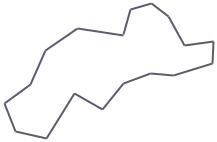balancing an AVL tree (C++)
I’m having the hardest time trying to figure out how to balance an AVL tree for my class. I’ve got it inserting with this:
Node* Tree::insert(int d) < cout Node* Tree::insert(Node*& current, int d) < cout data) < insert(current->lchild, d); if (height(current->lchild) - height(current->rchild)) < if (d < current->lchild->getData()) rotateLeftOnce(current); else rotateLeftTwice(current); > > else if (d > current->getData()) < insert(current->rchild, d); if (height(current->rchild) - height(current->lchild)) < if (d >current->rchild->getData()) rotateRightOnce(current); else rotateRightTwice(current); > > return current; > My plan was to have the calls to balance() check to see if the tree needs balancing and then balance as needed. The trouble is, I can’t even figure out how to traverse the tree to find the correct unbalanced node. I know how to traverse the tree recursively, but I can’t seem to translate that algorithm into finding the lowest unbalanced node. I’m also having trouble writing an iterative algorithm. Any help would be appreciated. 🙂
By the way, if you are familiar with java, for me the book Data Structures and Algorithms in Java, by Lafore helped me a lot to understand data structures. Although it does not have AVL it does talk extensively about Red-Black trees, which i if find easier. Once you understand them in Java you can do it in any other language you are familiar with, the whole point is understanding the way they work
@Carlos: I agree that as long as the language is not cryptic (perl . ) any will do to demonstrate the implementation of an algorithm or data-structure.
4 Answers 4
You can measure the height of a branch at a given point to calculate the unbalance
(remember a difference in height (levels) >= 2 means your tree is not balanced)
int Tree::Height(TreeNode *node)< int left, right; if(node==NULL) return 0; left = Height(node->left); right = Height(node->right); if(left > right) return left+1; else return right+1; > Depending on the unevenness then you can rotate as necessary
void Tree::rotateLeftOnce(TreeNode*& node)< TreeNode *otherNode; otherNode = node->left; node->left = otherNode->right; otherNode->right = node; node = otherNode; > void Tree::rotateLeftTwice(TreeNode*& node)< rotateRightOnce(node->left); rotateLeftOnce(node); > void Tree::rotateRightOnce(TreeNode*& node)< TreeNode *otherNode; otherNode = node->right; node->right = otherNode->left; otherNode->left = node; node = otherNode; > void Tree::rotateRightTwice(TreeNode*& node)< rotateLeftOnce(node->right); rotateRightOnce(node); > Now that we know how to rotate, lets say you want to insert a value in the tree. First we check whether the tree is empty or not
TreeNode* Tree::insert(int d) < if(isEmpty())< return (root = new TreeNode(d)); //Is empty when root = null >else return insert(root, d); //step-into the tree and place "d" > When the tree is not empty we use recursion to traverse the tree and get to where is needed
TreeNode* Tree::insert(TreeNode*& node, int d_IN)< if(node == NULL) // (1) If we are at the end of the tree place the value node = new TreeNode(d_IN); else if(d_IN < node->d_stored)< //(2) otherwise go left if smaller insert(node->left, d_IN); if(Height(node->left) - Height(node->right) == 2)< if(d_IN < node->left->d_stored) rotateLeftOnce(node); else rotateLeftTwice(node); > > else if(d_IN > node->d_stored)< // (3) otherwise go right if bigger insert(node->right, d_IN); if(Height(node->right) - Height(node->left) == 2) < if(d_IN >node->right->d_stored) rotateRightOnce(node); else rotateRightTwice(node); > > return node; > You should always check for balance (and do rotations if necessary) when modifying the tree, no point waiting until the end when the tree is a mess to balance it. That just complicates things.
There is a mistake in your implementation, in the code below you are not checking correctly whether the tree is unbalanced. You need to check whether the height is equals to 2 (therefore unbalance). As a result the code bellow.
if (height(current->lchild) - height(current->rchild)) < . if (height(current->rchild) - height(current->lchild)) if (height(current->lchild) - height(current->rchild) == 2) < . if (height(current->rchild) - height(current->lchild) == 2) Some Resources
Источник
Включение
► 1. Следовать по пути поиска, пока не будет найден ключ или окажется, что ключа нет в дереве. ► 2. Включить новый узел и определить 





виды балансировки
► однократный правый (RR) поворот ► однократный левый (LL) поворот ► двукратный поворот налево и направо (LR) 




4 5 



| 1 | 3 |
5 2 7 


4 2 5 
Удаление
► 1. Следовать по дереву, пока не будет найден удаляемый элемент. ► 2. Удалить найденный элемент, не разрушив структуры связей между 


Балансировка через массив
► (1) Скопировать данные из дерева в массив в отсортированном виде (2) очистить дерево. (3) добавить элемент из массива не отсортировано; средний элемент – вершина и т.д.; средний левой части, 




Источник

















































































